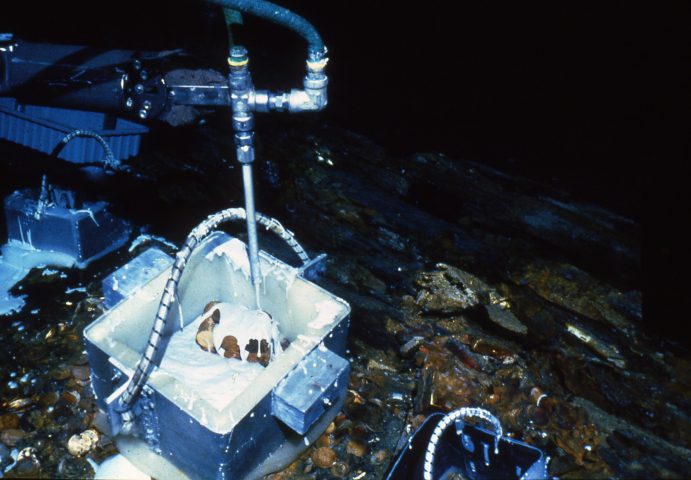- Delhi Comes Alive with 'Voice of Colors' artist camp 2024 by Sahitya Kala Parishad
- ezPaycheck: Simplified In-house Payroll Solution Adds New e941 Feature for 2024
- Luxe Transfers LTD Launches Premier Luxury Chauffeur Services in Birmingham and Beyond
- Loren James Dance Company Revolutionises Dance Education with Premier Dance Schools in Cardiff
- Zee MPCG’s ‘Building New India’ Conclave Paves the Way for Madhya Pradesh’s Bright Future
- PerfectionGeeks Revolutionizes Mobile Solutions as a Leading Flutter App Development Company in Spain
- Items from The Merrill House in Natchez, Miss., are in Crescent City's January 17-18 Estates Auction
- Tajurba Business Network Hosted a Successful SME IPO Workshop, empowering over 100 SMEs
- Bangalore Hospitals Introduces India's First 640-Slice CT Scan
- Honda Motorcycle & Scooter India launches New 2025 SP125 - ‘Be Bold, Be Advanced’
- Protheragen-ING Releases Hundreds of APIs: Anti-Tumor APIs, Hypoglycemic APIs, Antipsychotic APIs, Bronchiectasis APIs, Antihypertensive APIs
- SunTec India Named Among Leading SEO Companies in the US by SuperbCompanies
- Urimai Kural Drivers Trade Union urges government to reconsider GST on SaaS model to protect drivers’ livelihoods
- CD Formulation Announces Festive Discounts: 5%-15% Off on All Products and Services
- Al Faizan Brings Top-Tier Silver Plating Expertise to Dubai’s Thriving Market
 Mail to a Friend Mail to a Friend |
|
     |
Submarine Used in The Recovery of Artifacts from The S.S. Central America to be Auctioned March 4-5

Reno, NV, USA, February 25, 2023 -- The specially created 12,000-pound robot submarine nicknamed ?Nemo? that now-jailed treasure hunter Tommy Thompson used three decades ago to locate a fortune in California Gold Rush sunken treasure is for sale.
The remotely-operated underwater vehicle is one of the highlights featured in an auction with other never-before-offered historic artifacts recovered from the legendary ?Ship of Gold,? the S.S. Central America. The auction will be conducted in Reno, Nevada and online by Holabird Western Americana Collections LLC (www.HolabirdAmericana.com) on March 4 and 5, 2023.
?Nemo?s ingenuity is so exceptional that it could have been made for James Bond. It is such a sophisticated device that its precision robotic arms and suction tubes could carefully pick up a quarter-million-dollar rare gold coin from the ocean floor without damaging it,? said Dwight Manley, Managing Partner of the California Gold Marketing Group which owns the six-ton sub and the recovered treasures.
?The skilled scientist and engineers who built it even developed a silicone injection system that could retrieve entire groupings of coins or other objects from this fabulous time capsule of the California Gold Rush, and then meticulously clean up any remaining residue to protect the underwater environment,? added Manley.
The S.S. Central America was carrying tons of Gold Rush treasure from San Francisco and the northern California area when she sank 7,200 feet deep in the Atlantic off the North Carolina coast in a hurricane while on a voyage from Panama to New York City in September 1857.
?Nemo was named in honor of the great fictional ship captain imagined by author Jules Verne. It was deliberately designed to handle both heavy and delicate tasks, excavating and dismantling the collapsed pile of the shipwreck, as well as gently picking up coins where a single scratch could cause enormous loss of value," explained said Bob Evans, Chief Scientist of the S.S. Central America Project who was on each of the recovery missions.
"In certain situations, we employed a technique borrowed from paleontology, block lifting. Piles and stacks of coins were injected with a liquid silicone rubber compound, which then would congeal over a 48-hour period. Blocks containing over 300 coins could then be recovered as a single piece and then surgically extracted from the clump in a lab aboard ship or on shore," he noted.
?It was invented and built with the express purpose of recovering the gold from the S.S. Central America shipwreck. Working with the leader of the expedition, Tommy Thompson, we found the sunken ship in 1988 and began recovering its treasure as well as documenting previously unseen marine life that we observed with Nemo?s 3D underwater cameras. It is a remarkable, historic, scientific invention for exploring another world, akin to a space capsule or satellite probe, and it was used for the first truly deep-sea exploration and recovery from a shipwreck by private enterprise,? stated Evans.
Insurance claims for the ship?s loss were paid in the 1850s and the company that discovered and retrieved the treasure starting in 1988 settled with the insurers and their successors in 1995. With court approval, Manley and California Gold Marketing Group acquired clear title to all of that remaining treasure in 1999 as well as all the items recovered in 2014.
There also are vintage clothing items including an early Brooks Brothers shirt; ship?s objects such as cabin and dining plates, bowls, and bottles; a recovered porthole; the only still-intact Gold Rush treasure shipment box; and an intriguing 1850s photograph of an unknown young woman now nicknamed ?Mona Lisa of the Deep? that was found in a pile of coal on the seabed.
?There also 37 Cuban cigars apparently brought on board when the ship stopped in Havana on the voyage to New York. The cigars were discovered in 1991 in the recovered trunk of first-class passenger John Dement, a merchant, miner, and military veteran from Oregon City, Oregon, packed next to the oldest known Gold Rush miner's work pants that sold for a record $114,000 in the first auction of S.S. Central America artifacts this past December,? said Fred Holabird, president Holabird Western Americana Collections.
All items in the auction are being offered unreserved. For additional information, visit Holabird Western Americana Collections of Reno, Nevada at www.HolabirdAmericana.com, call 775-851-1859, or email info@holabirdamericana.com.
Company :-Holabird Western Americana Collections, LLC
User :- Fred Holabird
Email :-fredholabird@gmail.com
Phone :-7758511859
Url :- https://www.holabirdamericana.com









